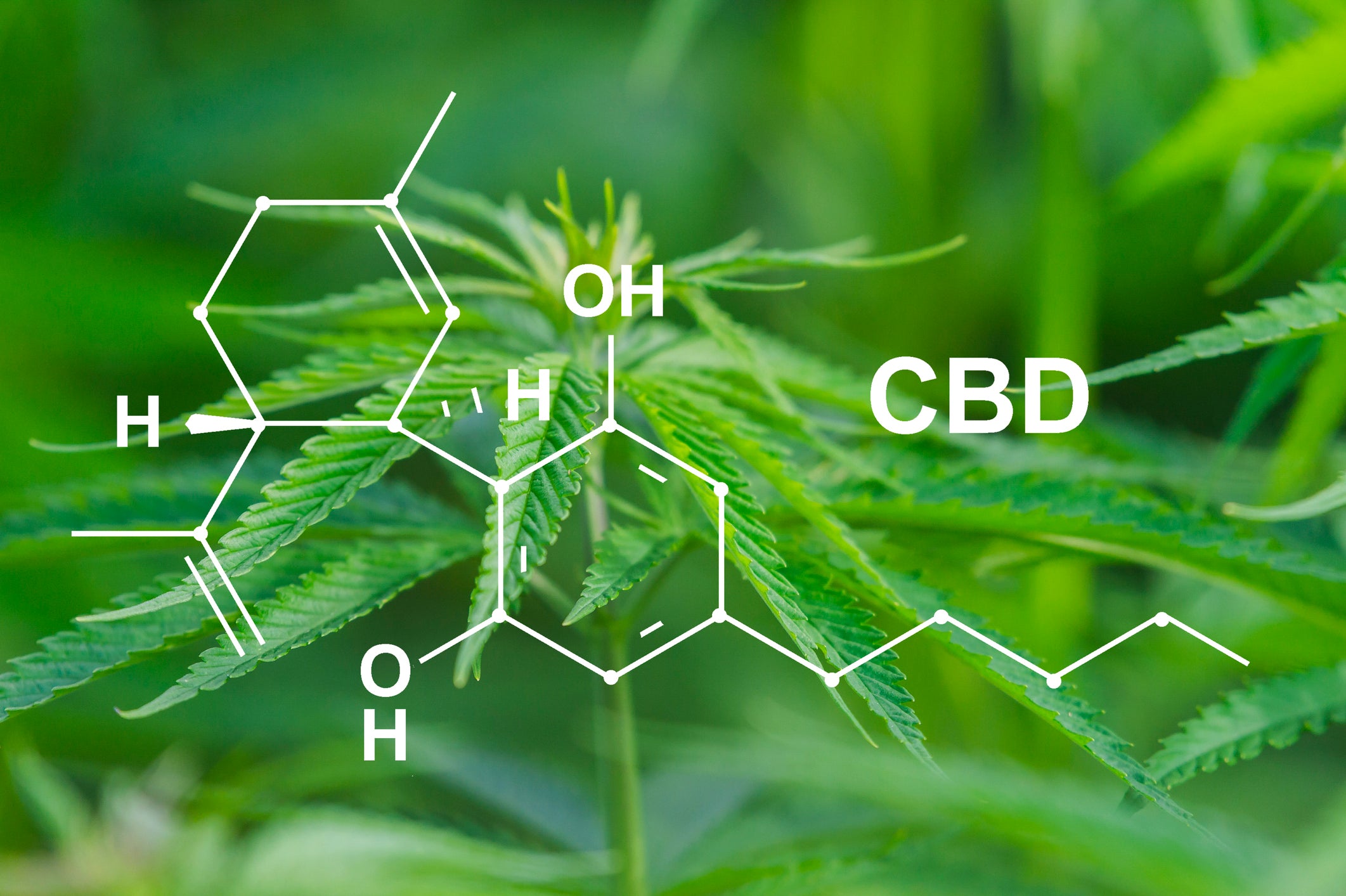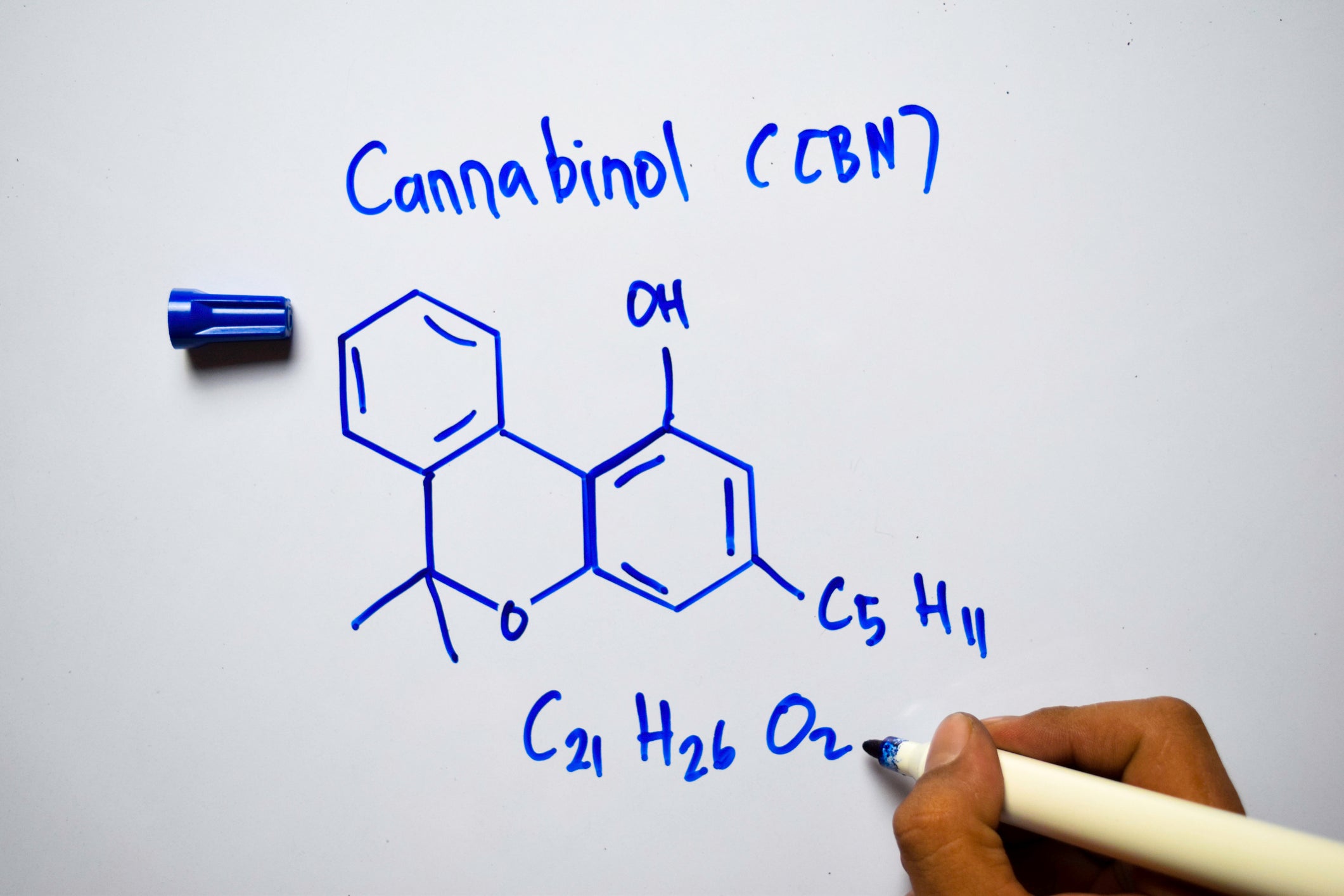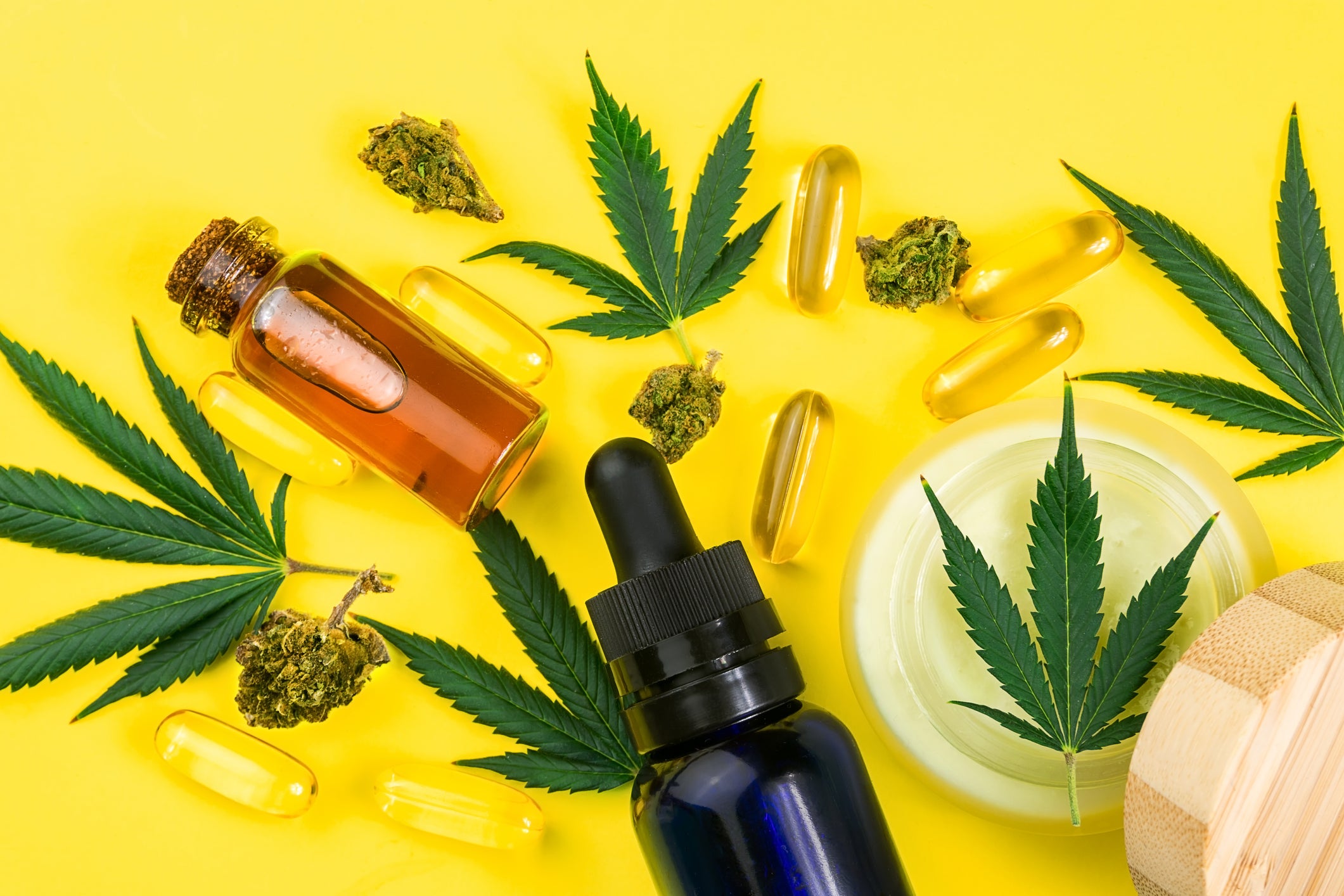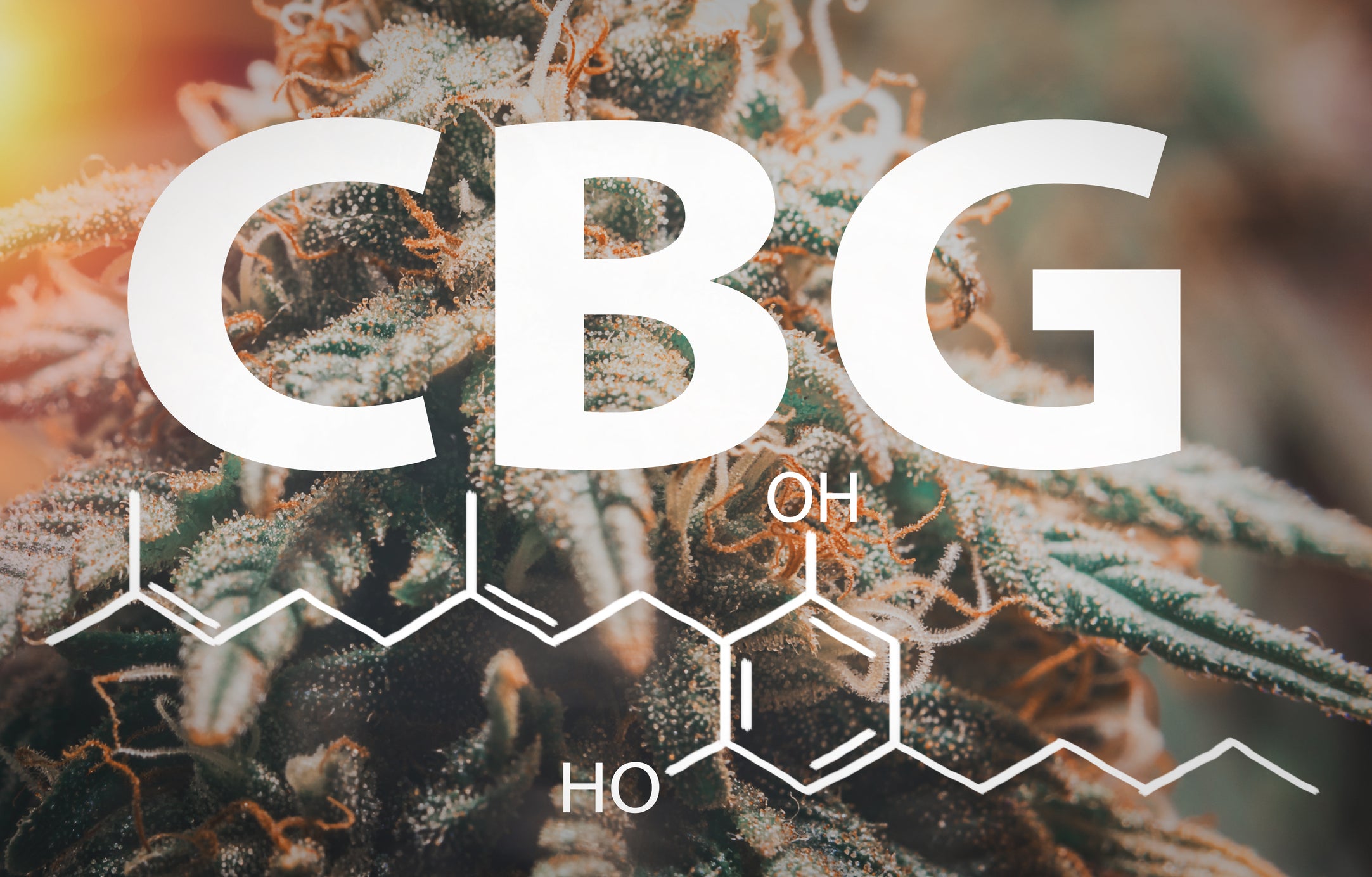CBD VS CBN VS CBG: WHAT'S THE DIFFERENCE?
The cannabis industry continues to evolve at a rapid pace, with more people than ever exploring the plant for a variety of reasons.
More research is being conducted all the time, with an emphasis on the potential benefits of the plant’s active ingredients.
Cannabinoids are the main compounds in cannabis responsible for its effects. The most prominent cannabinoids are THC, which is known for its “high,” and cannabidiol (CBD), a non-intoxicating cannabinoid typically consumed for therapeutic purposes.
CBD has exploded in popularity over the last several years. Mostly derived from hemp, the compound was declared legal in all 50 states in 2018 with the passing of the Farm Bill.
Since then, the CBD industry has ballooned to a value of over $5 billion in the US alone and is only expected to increase.
As cannabis becomes more widely accepted and understood, other “lesser known cannabinoids” have entered the narrative.
This includes cannabigerol (CBG) and cannabinol (CBN), which are being touted for their possible wellness benefits.
CBN is particularly interesting for people seeking to relax and is popping up in more and more finished products such as edibles and oil.
But how do CBN and CBG compare to their cousin, CBD? Read on to find out.

What CBD looks like in the language of chemistry.
What is Cannabidiol (CBD) and how is it used?
CBD has become one of the most prevalent cannabinoids on the market due to its wide availability and many potential benefits.
It’s available in many different types of products, including smokable hemp flower, vapes, edibles (including beverages), lotions, tinctures, and even pet treats.
Scientific and medical studies on the effects of CBD have become more widespread, suggesting several possible wellness applications.
Studies have shown CBD may be effective at reducing anxiety, helping ease chronic pain, alleviating chemical dependence, and decreasing inflammation.
The compound has also shown great promise as a treatment for epilepsy; the United States Food and Drug Administration approved a CBD-based medication in 2018 for certain seizure disorders.

Many brands are marketing CBN for sleep due to its potential relaxing effects.
What is Cannabinol (CBN) and how is it used?
Interest in CBN has been steadily increasing as of late, with many people curious about its effects. While slightly more psychoactive than CBD, it’s still far less powerful than THC. Many brands are marketing CBN for sleep due to the compound’s potential as a tool for relaxation.
Types of CBN products
Cannabinol is far less prevalent in cannabis than THC and CBD, so you won’t see CBN-dominant flower on the market.
Instead, CBN oil and tinctures containing higher dosages of the cannabinoid make up a decent share of the products currently available.
But what is CBN oil or tincture? It’s simply a concentrated version of an extract or isolates that’s easy to consume.
One of the most popular products in this category is CBN gummies. Convenient and great tasting, these gummies typically contain a blend of cannabinoids such as CBN and CBD or CBN and THC.
Many people take CBN gummies for sleep but it turns out there may be even more this compound can do.

CBN can be offered in capsules, oils, tinctures, and any other kind of edible.
Potential benefits of CBN
At this time, there are only a handful of scientific studies focused on CBN but preliminary results combined with anecdotal evidence suggests the cannabinoid may have several uses.
CBN has been shown to have potential as a brain booster, an anti-inflammatory, an appetite stimulant, a germ killer, and a pain reliever.
Cannabinol is most famous for its relaxing effects, with many people touting CBN for sleep. While research is limited, one study conducted in the 1970s suggested the compound could potentially help people fall asleep.
More attention is being paid to CBN for sleep and future studies could reveal more about its potential.
At this time, there are no known health risks associated with CBN, but as mentioned, drowsiness is a common effect so it’s always a good idea to refrain from driving after consuming the cannabinoid.

Cannabigerol (CBG) is yet another cannabinoid with potential health benefits.
What is Cannabigerol (CBG) and how is it used?
Another cannabinoid currently making waves is cannabigerol. This cannabinoid does not offer psychoactive effects and is prevalent in many hemp strains, particularly White CBG.
CBG flower is becoming more popular, but tinctures, edibles, and vapes are also available. Much like other cannabinoids, the science on CBG is limited.
However, a number of studies have resulted in CBG being touted as a potential wellness tool with similar benefits to other cannabinoids, showing promise as an antibacterial, anti-inflammatory, and appetite stimulant.
Research also indicates CBG could be used to help treat glaucoma, inflammatory bowel disease, and attention deficit disorder.
CBD vs CBN vs CBG
Cannabis is an extremely complex plant, with hundreds of different cannabinoids offering a wide variety of possible outcomes.
As legalization spreads, more is being learned about these compounds and how they could shape the future of the wellness market.
While CBD remains among the most popular cannabinoids, CBN and CBG are beginning to become more prevalent.
All three are legal across the country as long as they come from a hemp plant. While similar to CBD in their overall effects, both CBG and CBN could have several uses of their own.
CBG is being closely examined for its anti-inflammatory properties, as well as its potential as a treatment for glaucoma.
Many people credit CBN for sleeping better but more research is needed before it can be determined if we will see the cannabinoid marketed as a mainstream sleep aid in the future.
While much more is yet to be revealed about cannabinoids like CBD, CBN, and CBG, it’s likely the compounds will play an important role in the cannabis industry of the future.
More products containing cannabinoid blends are on the horizon, ensuring there’s something for everyone.
At Stiiizy, we only use premium flowers for all of our cannabis edibles and a variety of rich flavors. Check out our 90mg and 100mg cannabis gummies. Explore all of Stiiizy’s products here.
These statements have not been evaluated by the Food and Drug Administration. This product is not intended to diagnose, treat, cure, or prevent any disease.
Sources cited:
- https://www.fda.gov/news-events/congressional-testimony/hemp-production-and-2018-farm-bill-07252019
- https://www.prnewswire.com/news-releases/consumer-interest-continues-to-rise-as-cbd-sales-expected-to-reach-16-billion-by-2026-301473433.html
- https://www.ncbi.nlm.nih.gov/pmc/articles/PMC4604171/
- https://www.sciencedaily.com/releases/2021/04/210423130221.htm
- https://www.ncbi.nlm.nih.gov/pmc/articles/PMC4444130/
- https://www.fda.gov/news-events/press-announcements/fda-approves-first-drug-comprised-active-ingredient-derived-marijuana-treat-rare-severe-forms
- https://pubmed.ncbi.nlm.nih.gov/16183560/
- https://www.ncbi.nlm.nih.gov/pmc/articles/PMC2828614/
- https://pubmed.ncbi.nlm.nih.gov/22543671/
- https://pubmed.ncbi.nlm.nih.gov/18681481/
- https://pubmed.ncbi.nlm.nih.gov/31158702/
- https://pubmed.ncbi.nlm.nih.gov/1221432/
- https://pubmed.ncbi.nlm.nih.gov/34082108/
- https://www.ncbi.nlm.nih.gov/pmc/articles/PMC5021742
- https://www.ncbi.nlm.nih.gov/pmc/articles/PMC1772142/
- https://pubmed.ncbi.nlm.nih.gov/23415610/
- https://www.ncbi.nlm.nih.gov/pmc/articles/PMC7000160/
The content provided on this blog is for informational purposes only and is not intended as professional medical advice, diagnosis, or treatment. Please consult with your healthcare provider and local laws before purchasing or consuming cannabis.

